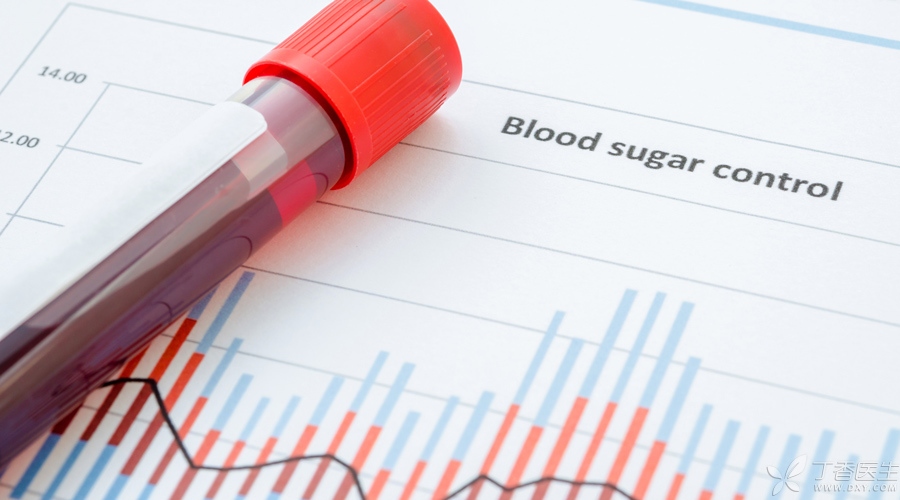
When it comes to lowering blood sugar, many people’s first reaction is hypoglycemic drugs. Even some sugar friends think that blood sugar is high, as long as you take medicine and give injections. Compared with diet control and regular exercise, the drugs take effect quickly and have good effects, and you don’t have to take care of yourself every day.
If you have such an idea, it is a big mistake!
A large number of studies have shown that diet control, regular exercise and other lifestyle adjustment methods have obvious sugar control effect. In addition, if these methods can be used well, it can also improve the hypoglycemic effect of drugs, thus reducing the dosage of drugs.
Shut up
Adjusting diet, whether it is people who need to prevent diabetes, such as relatives of diabetic patients, or people who are in pre-diabetes or have diabetes, has obvious effect on preventing and treating diabetes.
For people who need to prevent diabetes:
- Reducing the total energy intake of diet can reduce the risk of diabetes by 58% for people with impaired glucose tolerance [1]. Compared with flour and rice, eating coarse grains can reduce the risk of diabetes by about 28% [4]; Not eating processed meat products (such as sausage, bacon, ham, etc.) can reduce the risk of diabetes by 24% [6]; Replacing sugary beverages such as fruit juice with water and tea can reduce the risk of diabetes by 8% [7].
For diabetics:
- Hypoglycemic index diet for more than 4 weeks can reduce glycosylated hemoglobin of diabetics by 0.4% [2], and can also reduce the risk of diabetes by about 16% [3]; Eating more foods rich in fiber (such as coarse grains, vegetables, etc.) for more than 8 weeks can reduce glycosylated hemoglobin of diabetics by 0.55% [5].
Do this:
- Control the total energy of diet, subject to maintaining normal weight; Coarse grains with low glycemic index are taken as part of daily staple food; Eat enough vegetables, more than 500g per day, and eat appropriate amount of fruits according to your blood sugar. Eat a proper amount of fish, poultry and lean meat, and do not eat or eat less processed and pickled meat; No sugary drinks.

Multi-movement
Some studies have shown that regular exercise for more than 8 weeks can reduce glycosylated hemoglobin of patients with type 2 diabetes by 0.66%. The risk of complications for diabetic patients who have been exercising regularly for more than 10 years is significantly reduced [8]. To achieve a good effect of exercise sugar control, do this:
1. Aerobic exercise: at least 150 minutes per week
In terms of time arrangement, you can choose to exercise 5 days a week for 30 minutes each time. You can also choose to play short-term sports (e.g. 10 minutes) once, with a total of 30 minutes per day.
The intensity of exercise should reach a level that is a little laborious, with faster heartbeat and breathing but not shortness.
The types of sports can be fast walking, Taijiquan, cycling, table tennis, badminton, golf, dancing, aerobics, jogging, swimming and other forms.
2. Muscle enhancement training: twice a week
Do muscle training twice a week, that is, resistance exercise. You can first carry out some self-weight exercises, such as push-ups, squats in situ, cutting squats, flat support, squats and jumps, abdominal curls, squats against the wall, etc. After the exercise ability is improved, then carry out some weight-bearing exercises, such as weight-bearing squats, weight-bearing walking, etc.
However, it is necessary to remind everyone to avoid exercise when fasting blood glucose is > 16.7 mmol/L. However, in cases of repeated hypoglycemia and diabetic complications (cardiovascular and cerebrovascular diseases, nephropathy, retinopathy), extra care should be taken during exercise and exercise should be carried out under the guidance of doctors.
At the same time, diabetics with knee joint pain symptoms should pay attention to avoid squats, squats and jumps, weight-bearing walking and other exercises that increase the burden on the knee joint.
Weight control
Reasonable weight reduction and weight control within the normal range can increase insulin sensitivity and help control blood sugar: 8.6% weight reduction within one year can reduce glycosylated hemoglobin of patients with type 2 diabetes by 0.7% [9].
Do this:
Calculate BMI (BMI = weight kg ÷ height ² m, e.g. Height 1.7 m, weight 70 kg, BMI: 70 ÷ 1.7 ² = 24.22):
- If BMI is greater than 24, we should consider losing weight by improving our lifestyle, such as controlling diet and increasing exercise. If BMI is more than 32 kg/m2, gastrointestinal bariatric surgery can also be considered.
Measure waist circumference, if men > 2.7 city feet (90 cm) and women > 2.4 city feet (80 cm), you should also consider losing weight.
Drink less
Excessive drinking (more than 50 g for women and 60 g for men) can increase people’s risk of diabetes [10]; However, drinking alcohol by diabetics may induce hypoglycemia and is not conducive to long-term blood sugar control.
Do this:
Drinking alcohol is not recommended for diabetic patients, especially those with a history of hypoglycemia attacks.
Diabetes patients should not drink on an empty stomach.
If you drink alcohol, you must reduce your appetite and strictly limit it:
- No more than 15 g of alcohol for women, equivalent to 450 ml of beer, 150 ml of wine or 50 ml of white wine (below 40 degrees); No more than 25 g of alcohol for men, equivalent to 750 ml of beer, 250 ml of wine or 70 ml of white wine (below 40 degrees).

No smoking
Some studies have found that compared with diabetic patients who smoke, the risk of cardiovascular and cerebrovascular diseases in patients who quit smoking has decreased by 44% [11], and at the same time, quitting smoking can also reduce the risk of diabetic nephropathy by about 30% [12].
Do this:
- Be determined to quit smoking. You must have a firm determination to quit smoking. You can’t quit smoking on a whim. Abstaining from body addiction: You can go to the smoking cessation clinic of the hospital for consultation. Under the guidance of the doctor, Use smoking cessation drugs or supplementary smoking cessation products, such as smoking cessation stickers and smoking cessation chewing gum. Heart addiction: It is more difficult to get rid of than rising addiction, heart addiction and habits developed over the years. When you want to smoke, you can wash your face, or use an alternative method such as holding a pen in your finger and chewing sugar-free chewing gum to help you through the hardest period of quitting smoking.
However, I still want to remind all sugar lovers that although these methods are important, they must not replace drug therapy.
Sugar lovers who are already using hypoglycemic drugs should still adhere to drug therapy. On this basis, using these methods can help them better control blood sugar.
